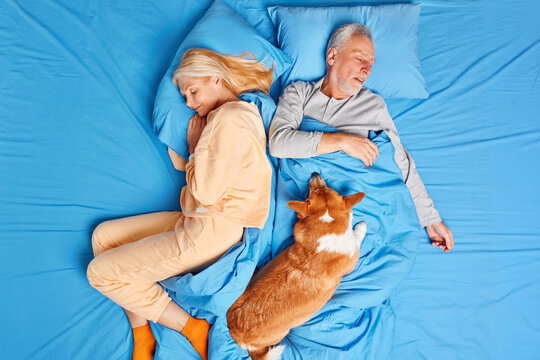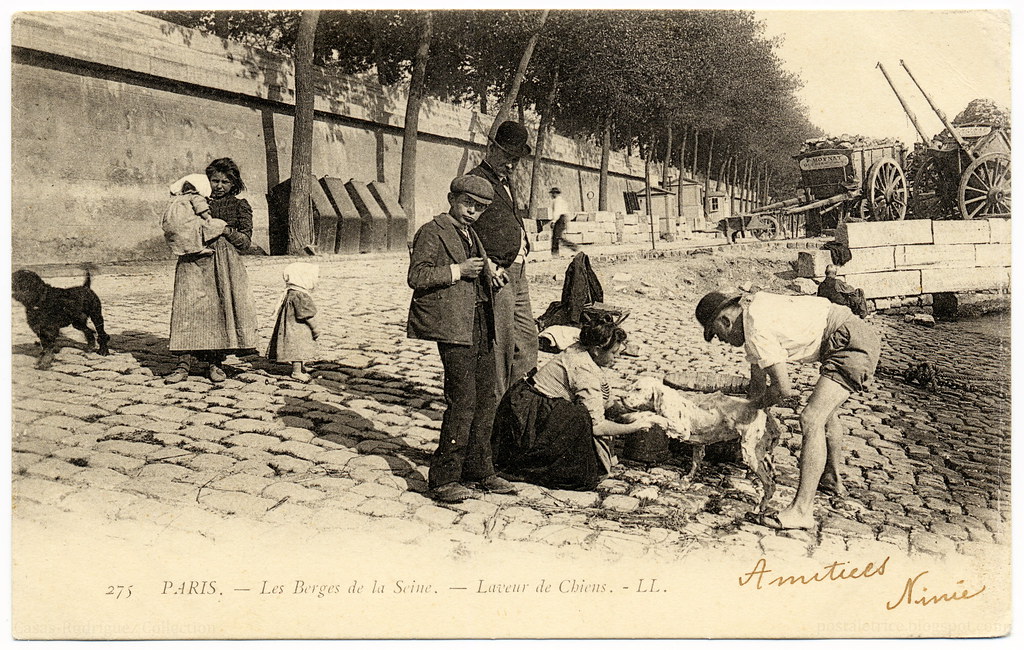Owning a dog is a fulfilling and rewarding experience, but it also comes with its share of responsibilities. As a dog owner, it’s essential to provide proper care and attention to ensure your furry friend remains healthy and happy. If you’re asking yourself, “I own a dog, what now?” this guide will provide you with a complete understanding of dog ownership and care. From preparing your home and choosing the right breed to training, grooming, and health, this article will cover everything you need to know to be a responsible dog owner.
Preparing for Dog Ownership
Owning a dog is a significant responsibility that requires careful consideration. Before bringing a new dog into your home, it is essential to evaluate your readiness for the commitment. Here are some things to consider:
Is a Dog the Right Pet for You?
Dogs require attention, exercise, and training, which can be time-consuming. If you have a busy lifestyle or a limited amount of time to care for a pet, a dog may not be the best choice for you. It is crucial to evaluate your lifestyle and determine if you can accommodate the needs of a dog.
Choosing the Right Breed for Your Lifestyle and Living Space
Different dog breeds have different temperaments, exercise requirements, grooming needs, and living space requirements. It’s essential to research and find a breed that fits your lifestyle, living space, and family situation. Consider factors such as activity level, living space, and family members when choosing a breed.
Preparing Your Home for a New Dog
Before bringing a new dog home, you need to ensure that your home is safe and secure. Here are some things to consider:
- Remove any hazardous items such as chemicals, small objects, and choking hazards.
- Designate a space for your dog, such as a crate or a bed.
- Purchase essential supplies such as food and water bowls, toys, and grooming supplies.
- Install baby gates or use other methods to block off areas that are off-limits to your dog.
- Provide a safe and secure outdoor space, such as a fenced yard.
By evaluating your readiness for dog ownership and preparing your home accordingly, you can ensure a smooth transition for both you and your new furry friend.
Basic Dog Care
Proper dog care is essential for your dog’s health and well-being. Here are some tips for creating a safe and healthy environment for your dog:
Feeding Recommendations and Best Practices
Feeding your dog a healthy and balanced diet is one of the most important aspects of pet care. Here are some feeding recommendations and best practices to keep in mind:
- Choose high-quality dog food: Look for dog food that is made with high-quality ingredients and meets your dog’s nutritional needs. Consider consulting with your veterinarian or a pet nutritionist to determine the best food for your dog.
- Feed your dog the right amount: Overfeeding your dog can lead to obesity and other health problems. Follow the feeding guidelines on the dog food package and adjust the amount based on your dog’s age, breed, and activity level.
- Stick to a feeding schedule: Establish a regular feeding schedule for your dog and stick to it. This will help prevent overeating and promote digestion.
- Provide fresh water: Make sure your dog has access to clean and fresh water at all times. Change the water bowl daily to prevent bacteria from growing.
Exercise and Playtime Recommendations
Regular exercise and playtime are crucial for your dog’s physical and mental health. Here are some exercise and playtime recommendations to keep in mind:
- Take your dog for daily walks: Daily walks provide exercise and stimulation for your dog. Aim for at least 30 minutes of exercise per day.
- Provide opportunities for play and exercise: Engage in activities that your dog enjoys, such as playing fetch, tug-of-war, or running in the park.
- Consider dog sports: Consider participating in dog sports such as agility, flyball, or obedience training. These activities provide exercise and mental stimulation for your dog.
- Use toys and puzzles: Toys and puzzles can provide mental stimulation for your dog, preventing boredom and destructive behavior. Rotate your dog’s toys regularly to keep them engaged.
Dog Grooming and Hygiene
Grooming is an essential part of your dog’s health and well-being. Here are some grooming tips to keep your dog looking and feeling their best:
Essential Grooming Tools
Grooming requires specific tools that are appropriate for your dog’s coat type and skin sensitivity. Here are some essential grooming tools to keep your dog well-groomed:
- Brush: A brush is essential for removing loose hair and preventing matting. Use a slicker brush for dogs with long hair and a bristle brush for dogs with short hair.
- Comb: A comb is essential for untangling mats and removing debris from your dog’s coat.
- Nail Clippers: Nail clippers are essential for keeping your dog’s nails trimmed and healthy. Choose the right size for your dog’s nails and use them with care.
- Shampoo: Use a gentle shampoo that is appropriate for your dog’s coat type and skin sensitivity. Make sure to rinse your dog thoroughly to avoid any irritation.
- Towels and Blow Dryers: Use towels to dry your dog after bathing and a blow dryer for dogs with long hair.
Grooming Frequency
The frequency of grooming will depend on your dog’s breed and coat type. Here are some general guidelines to help you determine how often to groom your dog:
- Daily Grooming: Breeds with longer hair such as the Bichon Frise, Shih Tzu, and Poodle require daily grooming to prevent matting and tangling.
- Weekly Grooming: Breeds with shorter hair such as the Beagle, Boxer, and Labrador Retriever require weekly grooming to maintain a healthy coat.
- Monthly Grooming: Breeds with shorter hair and smooth coats such as the Dalmatian and Great Dane only require monthly grooming.
Consult with your vet or groomer to determine the appropriate grooming schedule for your dog.
Bathing
Bathing is an essential part of dog grooming, but it’s important to do it right. Here are some tips for bathing your dog:
- Use a gentle shampoo: Choose a shampoo that is appropriate for your dog’s coat type and skin sensitivity. Avoid shampoos that contain harsh chemicals or fragrances.
- Rinse thoroughly: Make sure to rinse your dog thoroughly to avoid any irritation or residue left on their skin.
- Avoid soap in eyes and ears: Protect your dog’s eyes and ears by avoiding getting soap in those areas. Use a damp cloth to clean around their eyes and ears if needed.
Brushing
Brushing is an essential part of dog grooming. Here are some tips for brushing your dog’s coat:
- Choose the right brush: Use a slicker brush for dogs with long hair and a bristle brush for dogs with short hair.
- Brush regularly: Brush your dog’s coat regularly to prevent matting and tangling. This can also help distribute natural oils throughout their coat.
- Start slowly: If your dog is not used to being brushed, start slowly and gently to avoid any discomfort.
Nail Trimming
Nail trimming is essential for keeping your dog’s nails healthy and comfortable. Here are some tips for trimming your dog’s nails:
- Choose the right size nail clippers: Use the right size nail clippers for your dog’s nails to avoid any discomfort or injury.
- Trim regularly: Trim your dog’s nails regularly to prevent them from becoming too long and causing discomfort.
- Consult a professional: If you are uncomfortable trimming your dog’s nails yourself, consult with your vet or groomer for assistance.
Dental Hygiene
Dental hygiene is an essential part of your dog’s overall health. Here are some tips for maintaining your dog’s oral health:
- Brush their teeth regularly: Brush your dog’s teeth regularly with a toothbrush and toothpaste made specifically for dogs.
- Provide chew toys and dental treats: Chew toys and dental treats can help remove buildup on your dog’s teeth and promote good oral health.
By following these grooming tips, you can help keep your dog healthy and comfortable and strengthen the bond between you and your furry companion.
Training and Behavior
Training your dog is crucial for their behavior and safety. Here are some important tips and techniques for dog training:
Basic Obedience Commands
Teach your dog basic obedience commands such as sit, stay, come, heel, and leave it. These commands not only help with behavior but can also keep your dog safe. Use positive reinforcement techniques such as treats and praise to encourage good behavior. Consistency is key, so use the same commands and techniques every time.
Housebreaking, Crate Training, and Leash Training
Housebreaking your dog requires patience and consistency. Crate training can be a useful tool for potty training and preventing destructive behavior. Leash training is important for your dog’s safety and your peace of mind. Use positive reinforcement techniques to encourage good behavior and make training a positive experience.
Positive Reinforcement Techniques
Positive reinforcement is the most effective way to train your dog. Reward good behavior with treats and praise and ignore bad behavior. Avoid punishment techniques as they can lead to fear and anxiety in your dog.
Addressing Common Behavior Problems
Barking and chewing are common behavior problems in dogs. Address these issues with training and by providing your dog with appropriate chew toys. If your dog is barking excessively, identify the root cause and address it with training or environmental changes. If your dog is chewing on inappropriate objects, redirect their attention to appropriate chew toys and provide plenty of exercise and mental stimulation.
Remember, training should be a positive and rewarding experience for both you and your dog. With patience, consistency, and positive reinforcement, you can train your dog to be a well-behaved and happy companion.
Health and Wellness
Keeping your dog healthy is essential for their happiness and well-being. Here are some tips for maintaining your dog’s health:
Common health problems in dogs
Common health problems in dogs include obesity, dental problems, and skin allergies. Regular vet checkups can help to prevent and address these issues. In addition, you can keep your dog healthy by providing them with a balanced diet, regular exercise, and plenty of fresh water.
Symptoms to watch out for and when to seek veterinary care
Watch for symptoms such as lethargy, loss of appetite, and vomiting. If your dog displays any of these symptoms, seek veterinary care immediately. Other symptoms to watch for include excessive thirst or urination, difficulty breathing, and changes in behavior or temperament.
Preventive measures and how to keep your dog healthy
Preventive measures such as regular exercise, a healthy diet, and proper grooming can help to keep your dog healthy. Regular exercise can help to prevent obesity and maintain your dog’s overall health. A healthy diet that is rich in nutrients can help to support your dog’s immune system and prevent disease. Proper grooming, including regular baths, brushing, and nail trimming, can help to prevent skin infections and other health issues.
Best practices for administering medication and following treatment plans
Follow your vet’s instructions for administering medication and following treatment plans. Make sure to give your dog the full course of medication, even if they seem to be feeling better. If you have any questions or concerns about your dog’s medication or treatment plan, don’t hesitate to contact your veterinarian.
Understanding your dog’s body language and behavior
Understanding your dog’s body language and behavior can help you to identify when your dog is feeling anxious, scared, or in pain. Signs of anxiety or stress in dogs include panting, pacing, and trembling. If you notice any of these signs, try to identify the cause of your dog’s distress and remove them from the situation if possible. Remember that every dog is different, and what works for one dog may not work for another.
The Benefits of Dog Ownership
Owning a dog is an enriching experience that comes with many benefits. Here are some of the advantages of dog ownership:
Improved Physical Health
Dog ownership can help improve your physical health by promoting regular exercise and reducing stress levels. Walking your dog daily not only helps keep your pet healthy and happy, but it also provides a great opportunity for you to get some exercise. Studies have shown that dog owners tend to be more physically active and have lower blood pressure, which can reduce the risk of heart disease.
Emotional Support
Dogs are known for providing emotional support to their owners. Spending time with your furry friend can help reduce feelings of anxiety and depression and improve your overall mood. Dogs are also great listeners and can provide comfort during difficult times.
Socialization
Dogs can help facilitate social interactions and provide opportunities to connect with other dog owners and animal lovers. Taking your dog to the dog park or attending dog-friendly events can be a great way to meet new people and make friends.
Companionship
Dogs are loyal and loving companions that provide unconditional love and support. They make great companions for people of all ages and can be especially beneficial for seniors or those living alone. Dogs are always there to greet you when you come home and provide a sense of security and comfort.
Socialization and Community
Socialization is key to having a well-adjusted, happy dog. It helps your pet become comfortable with new people, animals, and environments. Here are some tips to help you socialize your dog:
Importance of socialization for your dog’s well-being
Socialization helps your dog learn how to interact with other dogs and people and feel less anxious in new situations. It promotes good behavior and reduces the risk of fear or aggression.
Tips for introducing your dog to new people, animals, and environments
Introduce your dog to new people and animals gradually and in a controlled environment. Start with short and positive interactions, and gradually increase the duration and complexity of the interactions. It’s best to start socializing your dog at a young age, but it’s never too late to start.
Finding a community of fellow dog owners
Joining a local dog park or dog walking group is a great way to socialize with other dog owners and their pets. Not only will your dog get to play and socialize, but you’ll also have the opportunity to meet like-minded individuals who share your love for pets. You can also consider enrolling your dog in obedience classes or other training programs to help with socialization and behavior.
Common Mistakes to Avoid
Dog ownership is an exciting and fulfilling experience, but it also comes with many responsibilities. Here are some common mistakes that you should avoid as a new dog owner:
Neglecting Basic Care
One of the most common mistakes new dog owners make is neglecting basic care. Proper food, water, exercise, and medical care are essential for your dog’s health. Ignoring any of these areas can lead to various health problems and other issues. Make sure to provide your dog with a balanced diet of high-quality dog food that meets their nutritional needs, fresh water, regular exercise, and veterinary care for vaccinations and checkups.
Failing to Train Your Dog
Training is essential for your dog’s behavior and safety. Failing to train your dog can lead to behavior problems and even aggression. Consistency is key when it comes to dog training. Use positive reinforcement such as treats and praise to encourage good behavior and discourage bad behavior. Consider professional training if you’re struggling with specific behavior issues or need help with training techniques.
Ignoring Your Dog’s Needs
Dogs require attention and companionship, and ignoring their needs can lead to stress and anxiety. Make sure to spend time with your dog every day, providing plenty of attention, playtime, and exercise. Socialize your dog from a young age to help them become comfortable around people and other dogs.
Overfeeding Your Dog
Overfeeding your dog can lead to obesity and other health problems. Many dog owners give their dogs too many treats or table scraps, which can lead to weight gain and other health issues. Make sure to feed your dog according to their nutritional needs and provide healthy treats in moderation. Follow a regular feeding schedule, and avoid letting your dog snack throughout the day.
By avoiding these common mistakes, you can ensure that your dog stays healthy, happy, and well-behaved.
Legal Responsibilities and Resources
Dog ownership comes with legal responsibilities that you must be aware of to avoid any legal issues. Here are some things to consider:
Licensing and Vaccination Requirements for Dog Ownership
Most states require dogs to be licensed and vaccinated against rabies. Licensing laws vary by state and county, so it’s important to check the laws in your area. Licensing fees help support animal control programs and ensure that lost dogs can be reunited with their owners.
Vaccinations protect your dog from infectious diseases and prevent the spread of diseases to other animals and humans. Common vaccinations for dogs include rabies, distemper, and parvovirus. Talk to your veterinarian about which vaccinations are appropriate for your dog based on their age, health, and lifestyle.
Finding a Veterinarian and Other Pet Care Resources
Find a veterinarian that you trust and keep their contact information handy. Regular checkups and preventive care are essential for your dog’s health and well-being. Consider pet insurance to help cover the costs of unexpected medical expenses, such as emergency veterinary care.
In addition to a veterinarian, there are other pet care resources that can be helpful. These may include dog trainers, groomers, boarding facilities, and pet supply stores. Ask other dog owners for recommendations or search online for reviews and ratings.
Traveling with Your Dog and Boarding Options
If you plan to travel with your dog, it’s important to plan ahead and make sure your dog is comfortable and safe during the trip. Research pet-friendly hotels and transportation options, and make sure to bring all necessary supplies, such as food, water, and bedding.
If you cannot bring your dog with you on a trip, consider boarding your dog at a reputable kennel or with a trusted pet sitter. Make sure to visit the facility or meet the pet sitter in person before leaving your dog in their care. This will give you peace of mind and ensure that your dog is well-cared for while you’re away.
Conclusion
Congratulations! You’ve completed our guide to dog ownership. We hope that this guide has provided you with everything you need to know to become a responsible and loving dog owner. From preparing for dog ownership and basic dog care to grooming, training, health and wellness, socialization, and legal responsibilities, we’ve covered all the essential topics.
Now that you have the knowledge, it’s time to put it into action. Visit our shop to find everything you need to keep your dog happy and healthy, from high-quality dog food and treats to grooming tools, toys, and accessories.
Remember, owning a dog is a privilege and a responsibility. By providing your dog with proper care and attention, you’ll enjoy years of love and companionship with your furry friend. Thanks for reading and happy dog ownership!








